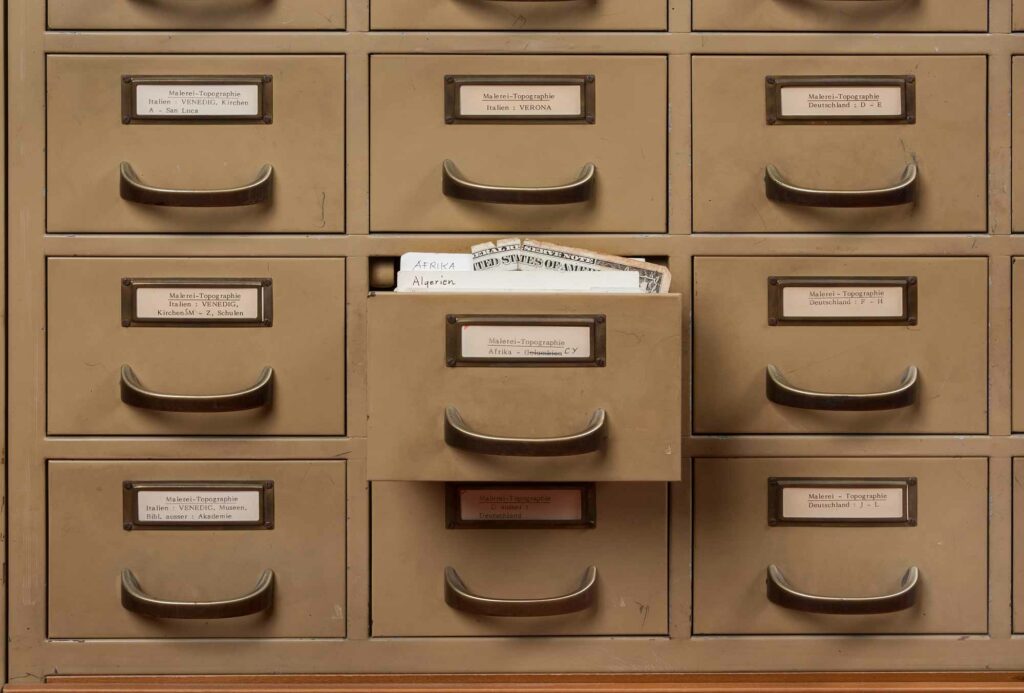2020
È solo una linea che ci separa (It is only a line that separates us) aims to tell a story that began on the island of Lampedusa in 2013. The installation Objects of Migration, Photo Objects of Art History. Encounters in an Archive, presented at the Photothek of the Kunsthistorisches Institut in Florence various times between 2017 and 2018, was inspired by and born from the photographic documentation of the Photothek and the objects that accompanied the refugees on their journeys. The project’s aim was to create a dialogue with the photographs documenting works of art that the Photothek has been collecting since 1897. These photographic series want to tell the story of what I have done during these years in a narrative that is as poetic as it is rooted in time. It is the story of relationships among individuals who are often diverse and distant yet bound together by mobility-migration, and who meet in different places and along different routes.
The project calls up apparent dichotomies between real objects and photographic objects with the aim of creating unexpected interconnections and discussions on methods and means of archiving and classifying. At the same time, it aims to be a stimulus for new thoughts on the objects of migration that should be considered part of our cultural heritage.
“È solo una linea che ci separa
È solo una linea che ci separa e separa il cielo dalla terra e dal mare,
ci osserviamo da lontano ma ci percepiamo vicini.
Mi siedo e attendo. Ruggine e rami mi proteggono.
Mescal è il mio nome.
Io ti guardo e tu guardi me.
Carlo è il mio nome.
Se mi avvicino sento molteplici voci.
È solo una barca che ci separa e separa il mare dalla terra e dal cielo e poi rumori, odori e ore di silenzio.
Se mi avvicino sento molteplici voci.
Non riesco ad avvertire più la mia pelle, sono terra.
Rinasco.
Viaggio spesso da e verso Damasco,
porto con me numeri, nomi e ricordi.
Il mio corpo è assente, ma cammina per molti luoghi,
i miei piedi poggiano sull’Italia.” M.R.
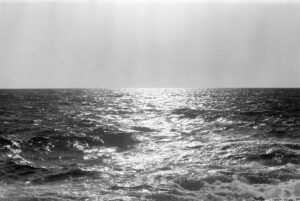
It is only a line that separates us and separates the sky from the earth and the sea. Lampedusa, 2014, 35mm B&W film
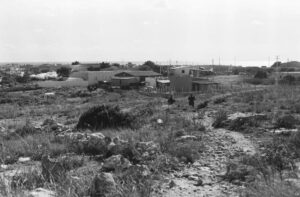
We look from a distance, but feel close. Lampedusa, 2014, 35mm B&W film
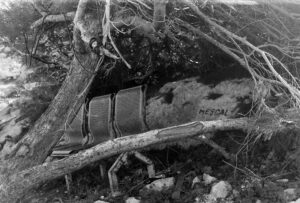
I sit and wait. Rust and branches are my shelter. Lampedusa, 2014, 35mm B&W film
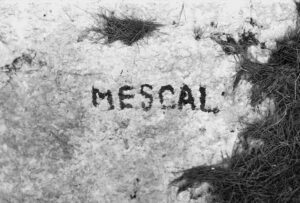
My name is Mescal. 35mm B&W film, Lampedusa, 2014
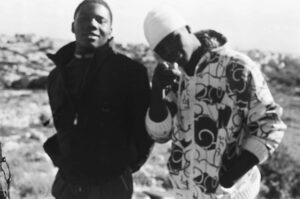
I look at you and you look at me. Lampedusa, 2014, 35mm B&W film
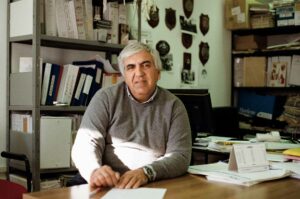
My name is Carlo. public Prosecutor of Syracuse, 2015, 35mm film
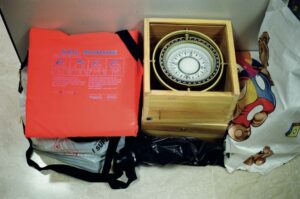
I hear many voices as I draw closer. migrants’ objects, Public Prosecution Office, Syracuse, 2015, 35mm film
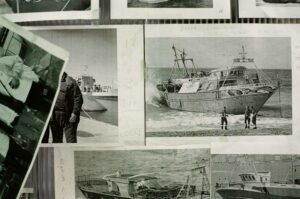
It is only a boat that separates us and separates the sea from the land and the sky. Syracuse, 2014, 35mm film
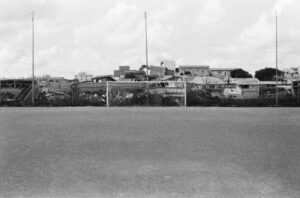
And then, sounds, smells and hours of silence. Lampedusa, 2014, 35mm B&W film
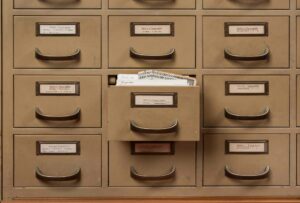
I hear many voices as I draw closer. 2018, topographic catalogue of the Photothek, painting section
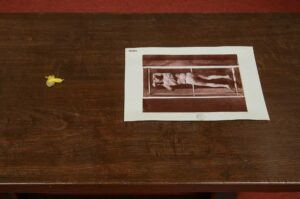
I can no longer feel my skin, I am earth. plastic bags filled with home soil, photograph depicting the plaster cast of one of the victims of the Vesuvius eruption in Pompeii, aluminum print, mounted on cardboard; photo: Studio Brogi
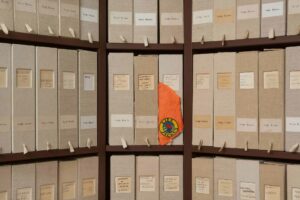
I am reborn. part of a life-vest on the shelves of the sculpture section of the Photothek
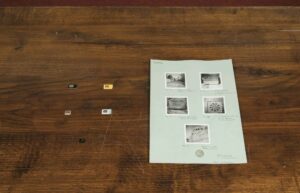
I often travel to Damascus and back. 5 SIM cards with 5 photographs of architecture in Damascus, Gelatin silver bromide print mounted on cardboard; photo: Friedrich Wilhelm Deichmann
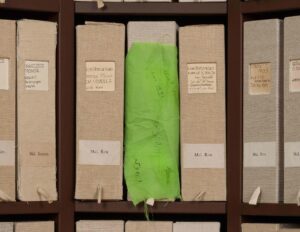
I carry numbers, names and memories. a scrap of fabric on the shelves of the painting section of the Photothek
![Massimo_Ricciardo, My body is missing, but it walks in many places. Remains of a shoe sole/fragment of a foot of an ancient porphyry statue, Bologna, Museo Civico. Gelatin silver bromide print; photographer: unknown [Museo Civico, Bologna]](https://www.brokenarchive.org/wp-content/uploads/2021/01/E_solo_una_linea_che_ci_separa-Massimo_Ricciardo_15-300x200.jpg)
My body is missing, but it walks in many places. Remains of a shoe sole/fragment of a foot of an ancient porphyry statue, Bologna, Museo Civico. Gelatin silver bromide print; photographer: unknown [Museo Civico, Bologna]

I just landed in Italy, notes jotted on a brochure printed by the Italian Institute for Foreign Affairs
archive, refugees, object, photography, mediterranean, island, sea, water
Massimo Ricciardo
Massimo Ricciardo, born 1979 in Darmstadt, lives and works in Turin. He has exhibited his works, inter alia, at the Kunsthistorisches Institut in Florenz – Max-Planck-Institut, Florence, 2018; Karlskirche Karlsplatz/documenta 14, Kassel, 2017; Kunsthaus, Dresden, 2016, Palazzo Donà Brusa, 56th Venice Biennale, 2015; Dassweisssehaus Kunstverein Wien, 2014; Pavillion Social, Kunstverein Lucca, 2014; and the Raffaele De Grada Gallery of Modern and Contemporary Art, San Gimignano, 2013.














![Massimo_Ricciardo, My body is missing, but it walks in many places. Remains of a shoe sole/fragment of a foot of an ancient porphyry statue, Bologna, Museo Civico. Gelatin silver bromide print; photographer: unknown [Museo Civico, Bologna]](https://www.brokenarchive.org/wp-content/uploads/2021/01/E_solo_una_linea_che_ci_separa-Massimo_Ricciardo_15-300x200.jpg)

